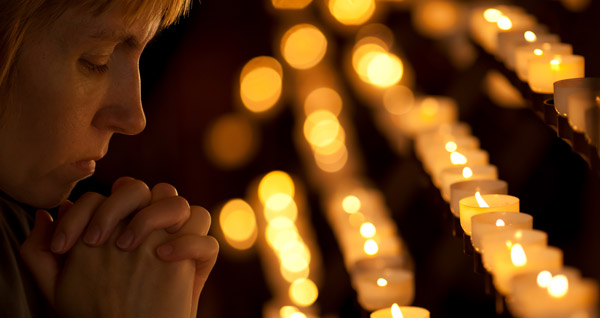
Although the 50-day Easter season officially concludes with Pentecost, the legacy of the resurrection and the descent of the Holy Spirit manifests itself throughout the rest of the year in Catholic worship. Indeed, Easter and Pentecost may be called the foundation of all Catholic Liturgy.
Though often dismissed as mere decoration to be overlooked, the adornments of divine worship reflect the mystical realities actualized in the Liturgy. This is true especially for candles. The Easter season concludes with a powerful sign when, after Mass on Pentecost, the celebrant may remove the Easter candle from its stand and bear it out of the church in the recessional.
Before the liturgical reforms of the 20th century, the Easter candle was extinguished on Ascension Thursday, just after the proclamation of the event in the Gospel of St. Mark.
The candle, representing the One who enlightens the lives of believers by the real passover from death to new life, would be extinguished to show that while Christ might have ascended into heaven, His presence would return soon in the Holy Spirit at Pentecost.
 Wishing to restore a sense of the ancient understanding of Pentecost as an occasion fitting for baptism, confirmation, and first Communion equal in merit to Easter, the fathers of the liturgical reform suggested that the paschal candle remain lit through Pentecost and then lead the faithful into their lives. No matter in what mode, or person He remains in the world, God leads those filled with His Spirit like the Pillar of Fire once did of old.
Wishing to restore a sense of the ancient understanding of Pentecost as an occasion fitting for baptism, confirmation, and first Communion equal in merit to Easter, the fathers of the liturgical reform suggested that the paschal candle remain lit through Pentecost and then lead the faithful into their lives. No matter in what mode, or person He remains in the world, God leads those filled with His Spirit like the Pillar of Fire once did of old.
Symbolically following the Easter candle’s guidance in our daily lives brings us back each Sunday to do in Christ’s memory eucharistically. Since celebration of the Light of Christ at Easter was the first Christian feast, it is no surprise that the candles used in synagogue worship would be carried into Christian prayer. Initially candles were a necessary accoutrement to illuminate nascent Christian worship in the catacombs.
As Christianity became more mainstream, candles not only took on a practical purpose, but their mystical purpose was also appreciated. Always reflecting piously about things used in honor of Christ, some of the early Church fathers saw in wax and wick a re-presentation of Christ Himself who dispels darkness.
One early reflection says, “The wax, being spotless, represents Christ’s most spotless Body; the wick enclosed in it is an image of His soul, while the glowing flame typifies the Divine Nature united with the human in one Divine Person.”
There is something about candles that captivate the human psyche. Despite the advent of artificial lighting, people who come together in solemn union often use candles to express the heaviness of their hearts. Mourners of princesses, presidents, soldiers and ordinary citizens have shown this. For many, candles are also conducive to romance.
While the Easter candle is the largest and brightest light, like Christ Himself, every smaller candle represents each believer who tries to reflect the true Light in their lives. It’s a great act to follow!

